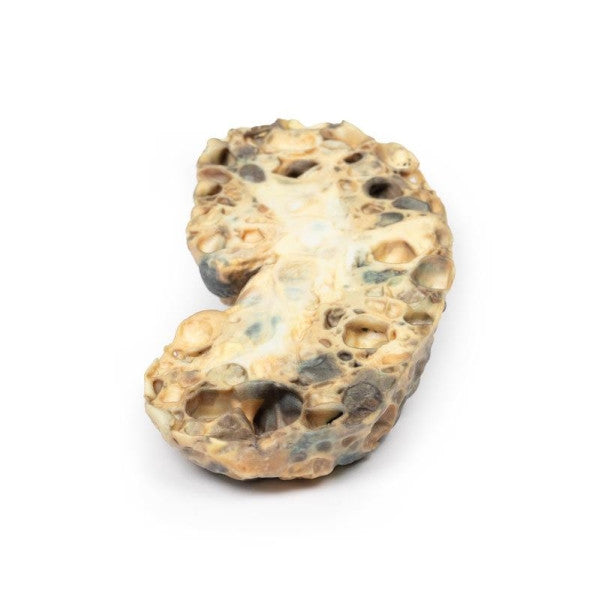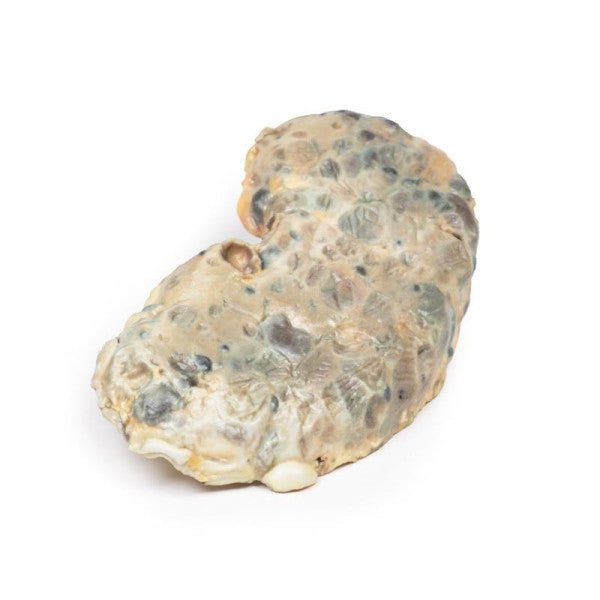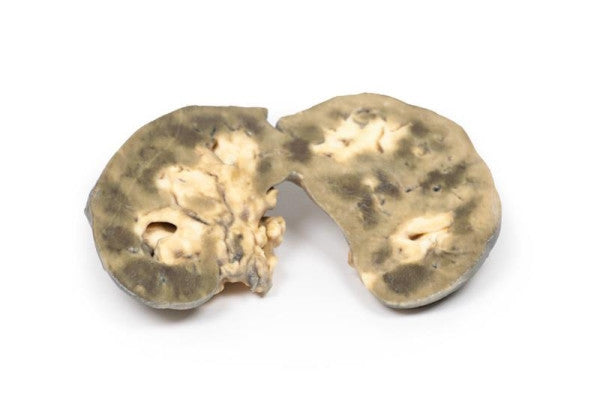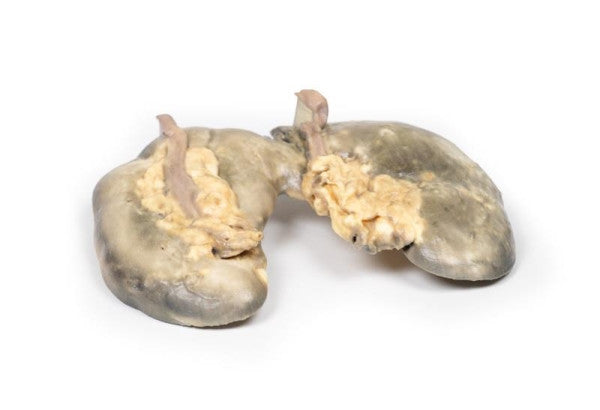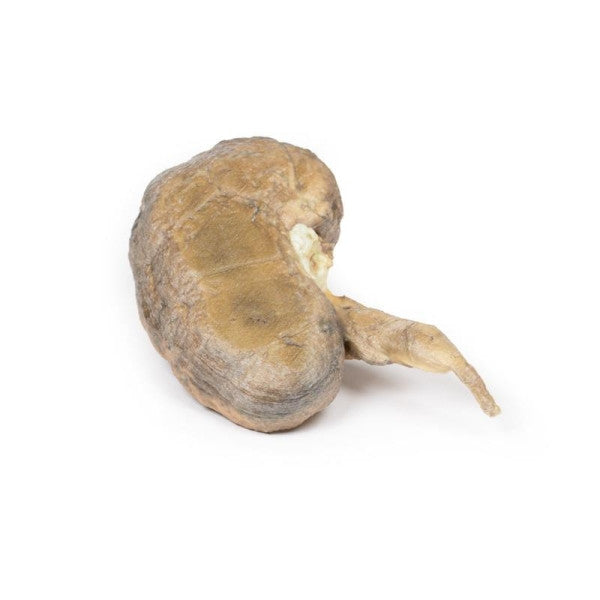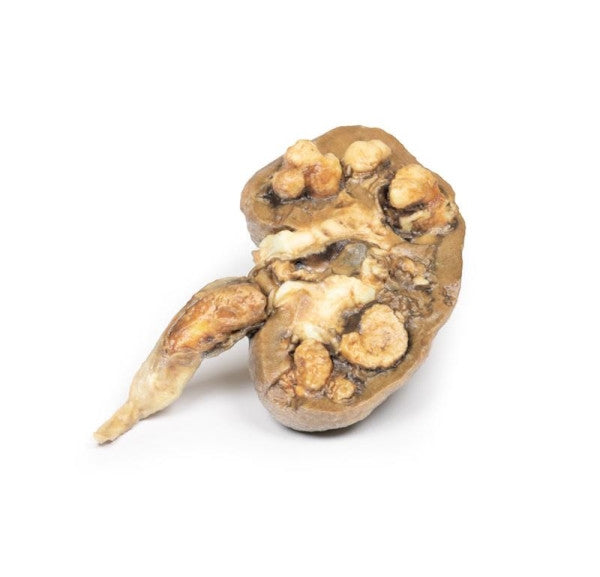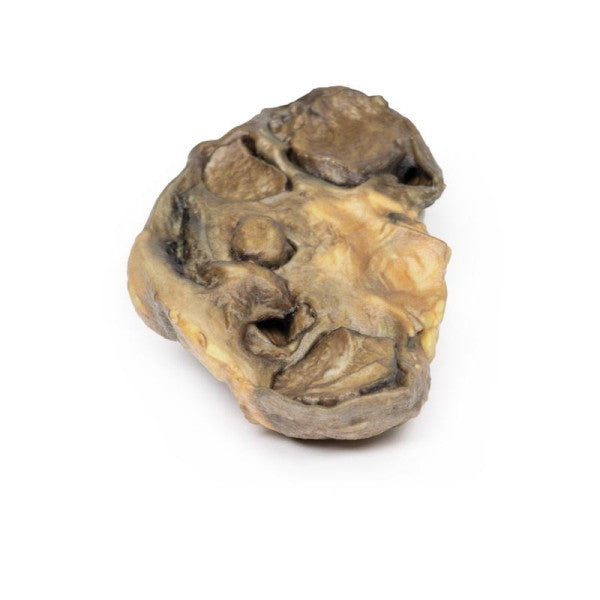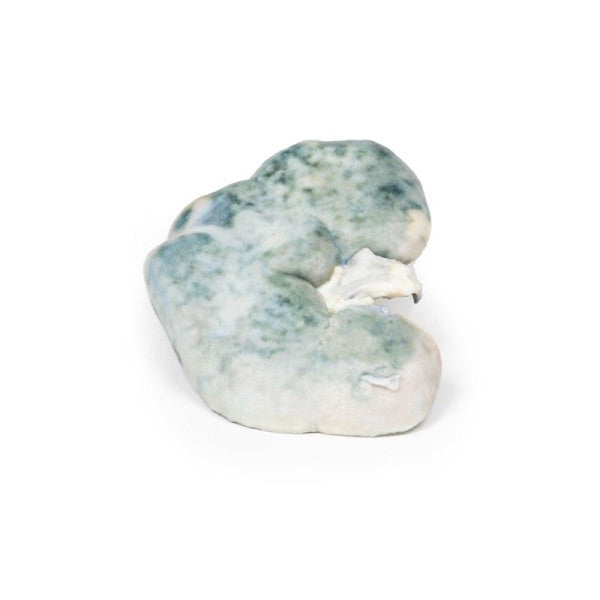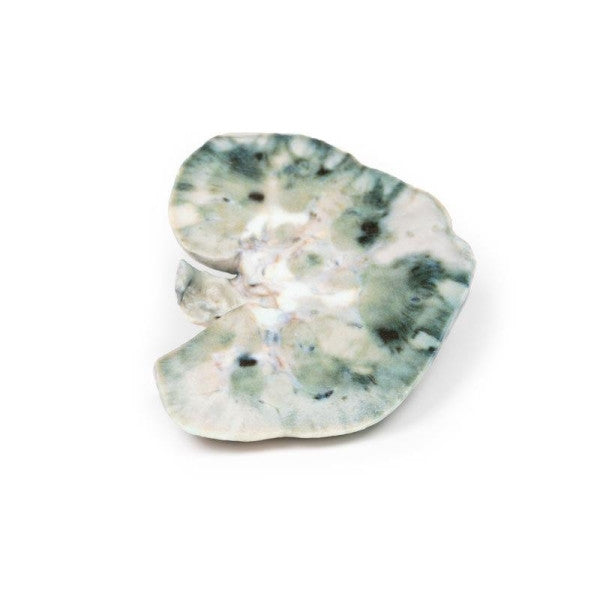Adult Polycystic Kidney Disease
This enlarged kidney exhibits numerous cysts, up to 3cm in diameter, replacing much of the renal tissue. These translucent-walled cysts, some with varied-coloured contents, created a marbled appearance on the kidney's lobulated external surface. The remaining renal tissue is significantly atrophied due to cyst-induced pressure. This exemplifies adult polycystic kidney disease.
Horseshoe Kidney
The 12cm kidney has a horseshoe shape due to fusion at the lower pole. Ureters emerge anteriorly, and the kidney, bisected horizontally, shows persistent foetal lobulation. The renal pelvis is antero-medially positioned, with ureters running anterior to the fused lower poles.
Multiple Renal Calculi
The kidney specimen exhibits noticeable dilatation of the pelvicalyceal system. Extensive renal tissue atrophy is evident, reduced to a thin rim in some areas. A sizable brown-white mottled calculus is present in the pelvis, and a smaller calculus obstructs the ureter lumen. Proximal to the impacted calculus, the ureter shows dilation. Multiple calculi are observable within the calyces of the specimen.
Pyonephrosis
This left nephrectomy specimen exhibits pelvis and calyces dilation with yellow pus remnants. Renal parenchyma displays significant fibrosis, and haemorrhagic necrotic areas near the lateral border, accompanied by two smaller similar areas on the capsular surface. These lesions are likely connected, possibly caused by haemorrhage into an abscess cavity, suggesting a perinephric abscess.
Septic Renal Infarct
The kidney specimen reveals distinct wedge-shaped pale regions in the cortex, extending along renal columns with the apex towards the medulla. The largest is situated laterally in the upper pole, representing infarcted renal tissue. Additionally, there are irregular dark areas indicated of haemorrhage.












